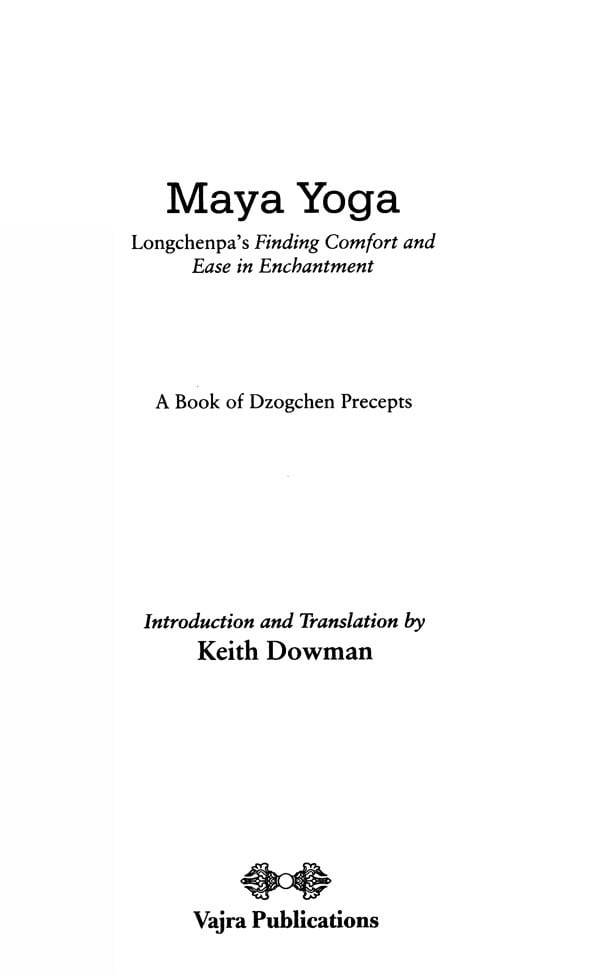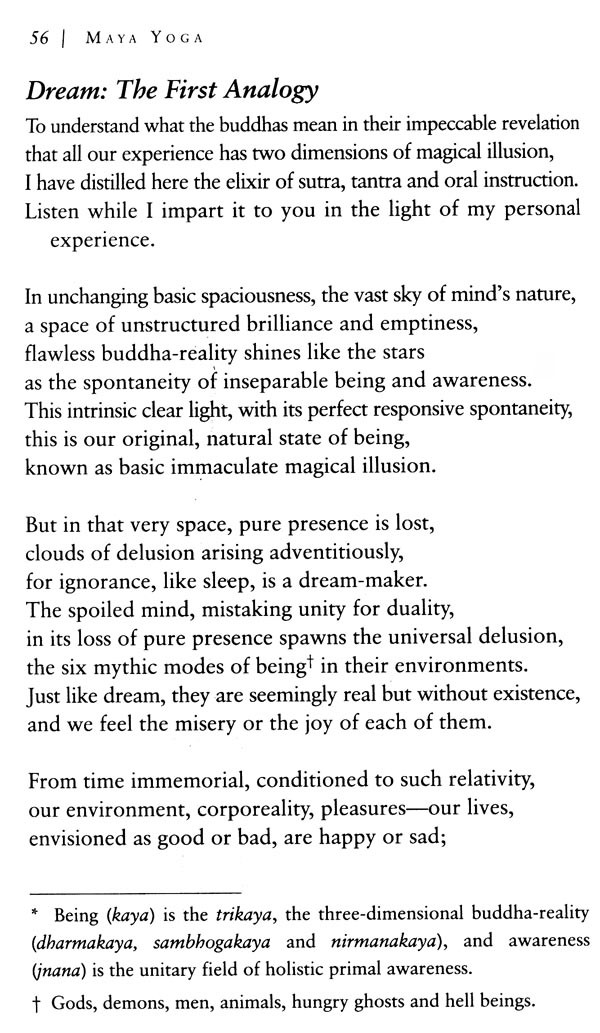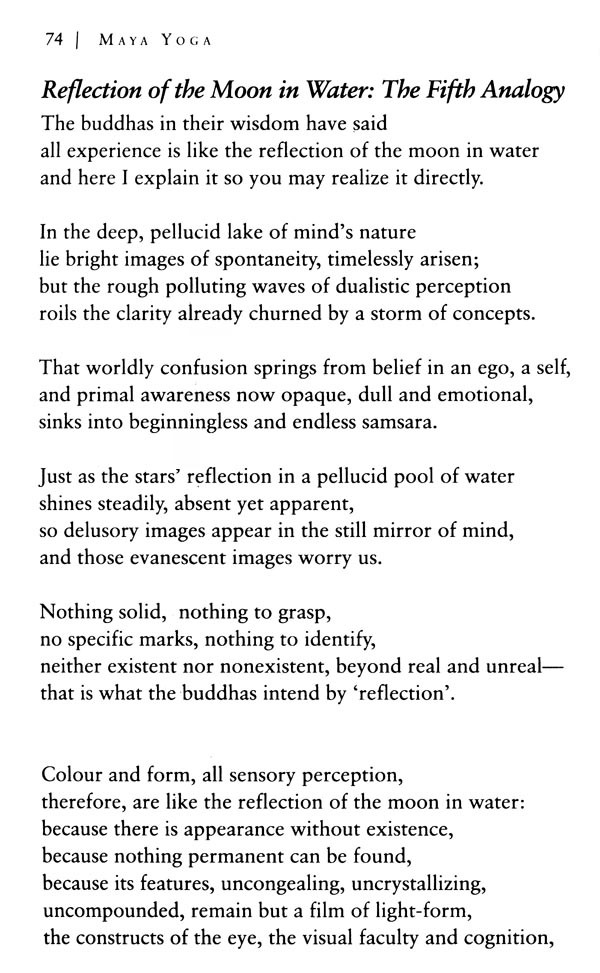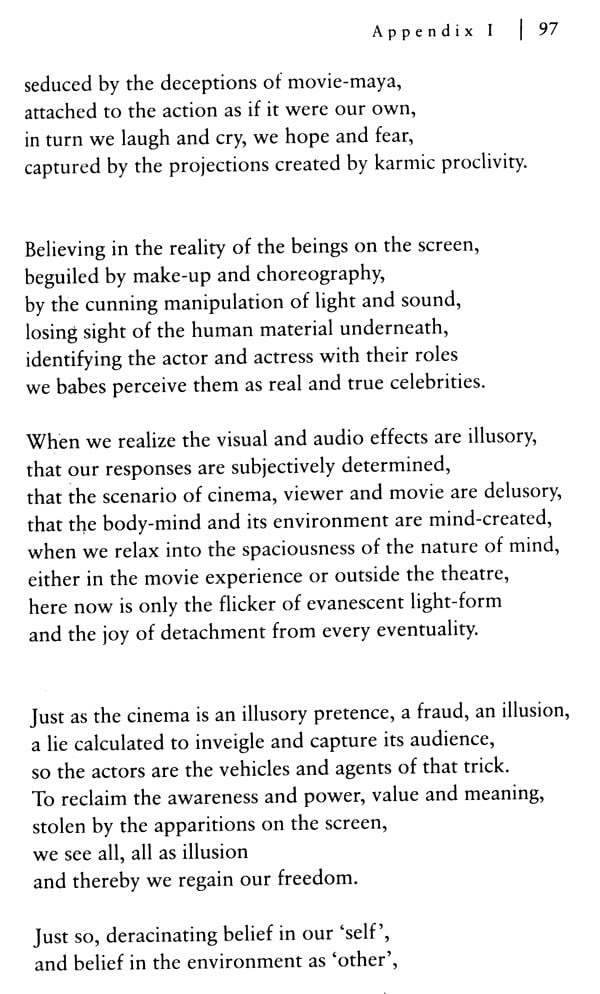About the Book Maya Yoga is the title of Keith Dowman's translation of Finding Comfort and Ease in Enchantment written by the inimitable Longchen Rajampa. In the Nyingmapa School of Tibetan Buddhism, this text is considered second to none in its power to evoke the nature of the nondual reality of the Dzogchen view. With poetic mastery, Longchenpa provides the precepts that can instantly illuminate the buddha-reality that is our ordinary everyday experience. He asserts that we are presently under the spell of magical illusion and that by recognizing it we are instanteneously released from a conceptual cage into enchanting reality which is pure pleasure itself. That reality is maya, apparent yet absent, and the recognition of it in the state of natural relaxation is maya yoga. In this renowned atiyoga manual, we find the key to the natural mystical state that Dzogchen, the Great Perfection, constantly evokes.
Longchen Rabjampa (1308-1363) was the greatest of Tibet's celebrated mystical poets and sages. The Trilogy of Finding Comfort and Ease is his most renowned work.
Preface Longchen Rabjampa was perhaps the greatest mind to walk in the Land of the Snows. Finding Comfort and Ease in Enchantment, published under the title Maya Yoga, is the third volume in his Trilogy of Finding Comfort and Ease. The first volume is Finding Comfort and Ease in the Nature of Mind and the second Finding Comfort and Ease in Meditation. I make no apology for another translation of one of Longchenpa's seminal Dzogchen texts. Each generation of translators makes its own interpretation of such important works, each building upon the next, until a final authoritative version is reached. Even now another generation of translators has assimilated its forebear's expertise, seemingly by cognitive osmosis, and has made a giant leap towards those final versions. I hope that this translation may be of use to them; but my main purpose is to represent the precepts whereby the mystical view of maha-ati can be recognized and its experiential understanding become available to all.
The publication in 1980 of Dr Herbert Guenther's translation of The Trilogy of Finding Comfort and Ease by Tarthang Tulku's Dharma Publishing under the title Kindly Bent to Ease Us was a crucial event in the publication of Dzogchen texts. It initiated a new phase of Dzogchen translation and offered a revised vocabulary for it. Concomitantly it provided a rationalization of the Vajrayana praxis that until then had been couched in simplistic, devotional terms.
Introduction As the tradition of Dzogchen has gained ground in the West, it appears to have produced two quite distinct responses. At best, a recognition of the natural state of being the nature of mind as known in direct experience of it-is induced. Taking the position of consequence', yanking themselves up by their own bootstraps as it were, those who know the Great Perfection simply by hearing an introduction to it recognize the spaciousness of pure presence. Then another response, from people who approach reality timorously, is awe and devotion. They meet the lineage-holding lamas like petitioners in the court of an oriental despot, knocking their heads on the floor, begging for a crumb from the high table. Then transported to a high level of radiance through the lama's grace, the supplicant basks in splendour until the moment arrives to return to the source for more.
The first response enables and enacts the immediate recognition of radical Dzogchen while the second reaction is a precursor of the gradual path of latter-day, elaborate or cultural, Dzogchen. The first relies upon existential experience and the precepts of atiyoga contained in the ancient texts and the second depends upon a relationship with the father-guru, upon mahayoga meditation practice and the religious life.
**Contents and Sample Pages**


















